7
- 12th of May. 2010 -
Last year, the subject of my future in the art world came up in conversation with my boss at the time, a gallery owner who was kind enough to take me in as an intern. I had just registered to take a summer class at the NYU SCPS for an Art Appraiser Certificate. His reaction to this was a very specific hand gesture, I think it means “you are crazy to even think about that, you should do something else” in gestural Hebrew or Italian. Needless to say I went anyway.
At the end of what was a very interesting month I landed an internship at a big auction house. Six month later, having learned a lot and feeling very much sobered about the realities of the auction house, I realized I had perhaps chosen the wrong path. I enjoy art far too much to spend my time dealing with the little intricacies of the auction house. Writing about art, spending time in its presence and constantly learning and reading about it is what I should be doing. Turns out that hand gesture might have been reasonable.
The whole experience made me think of bad reputation auction houses have among others within the art world. Do they really deserve to be looked down upon and frowned at by the “real” art world folk? True, auction houses are known as the rich / obnoxious / spoiled brat (take your pick) that no one likes to deal with. It seems that artists, art historians and art lovers would rather handle things with dealers (just as bad as the auction house if you ask me) or directly with a gallery or an art consulting company (don’t even get me started).
But it seems to me that there is more to it than just resentment to the character of the place and workers and the way business is done. After all, the auction house is aiming for the rich, it speaks their language and gives them the show they came for. Like any other business, it is there to care for itself, not for those who surround it. I believe some of the resentment has to do with what comes through these auctions. There have been comments about the quality of work that makes its way in. I must say that I agree that some of the works are of questionable quality, but the bottom line is that there are the occasional gems and that cannot be ignored.
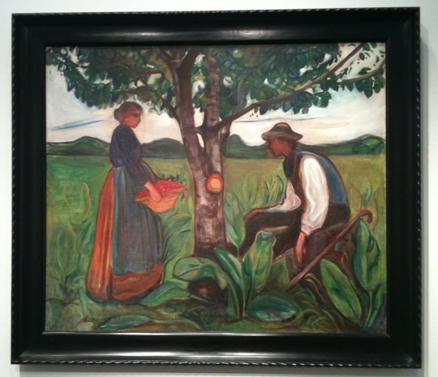
Edvard Munch, Fertility, 1902. Definitely a gem, did not reach its reserve, went back to owner.
Lately I have found myself attending more auction previews than galleries. The experience has been absolutely amazing. Phillips de Pury had a magnificent Photography Auction in early April, with a massive catalogue of almost 300 pieces that included many familiar names (Sherman, Goldin, Mann, Arbus, Evans, Penn. Mapplethorp and Lachapelle) and some I’d never heard of (Japanese photographers of the 1950’s, a gem), almost all in fantastic quality.

Joseph Koudelka, Romania 1968, 1968. My personal favorite at this preview.
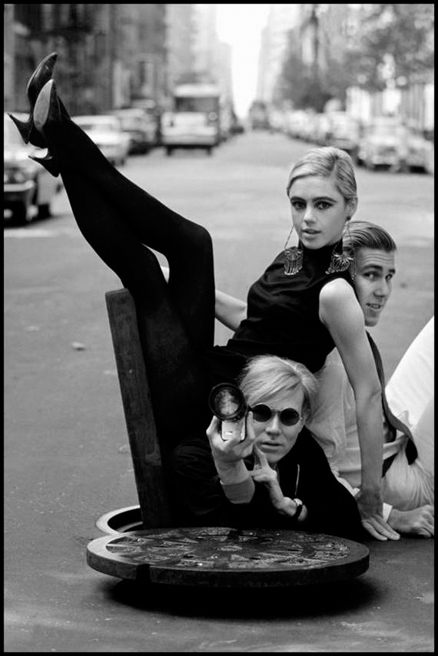
Burt Glinn, Andy Warhol in Manhole (Andy, Edie Sedgwick and Chuck Wein), 1965. My all time favorite photo of Warhol.
At Christie’s, the latest two auction previews, Impressionist / Modern and Post War / Contemporary, displayed works from two great collections, Brody and Chrichton, including several masterpieces by some of the great artists of these periods. Think Klee, Warhol, Johns, Prince, Andre, Moore, Renoir, Degas, Munch and Picasso. And that is just a small sample…

Picasso, Bateliers Nus; Couple Nu; Buste de Femme Nue; Femme Nue au Panier de Fruit; Femme Assise aux Bras Crois’s; Vieillard Debout les Bras Crois’s. Lovely little things.
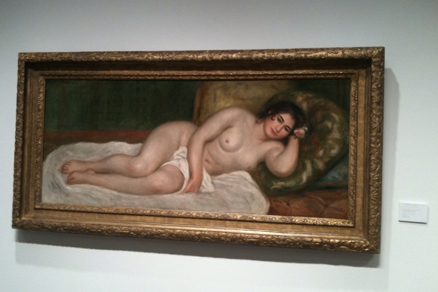
Renoir, Femme Nue Couchee, Gabrielle, 1903. For me this was a major wow factor.
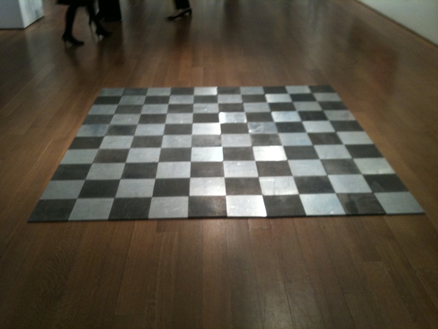
Carl Andre, Aluminum-Magnesium Alloy Square, 1969. At the MoMA I almost missed it. Here it was impossible to do so.
Walking through the auction house galleries and halls made me think and gave me the chills. This is a chance to see works that may never be presented to the public again, passing from one private hand to the other. A fantastic example is the beautiful Picasso that recently sold for a record-breaking $106 million (premium included), thought to have been lost, since the last known photo of it was in black and white.
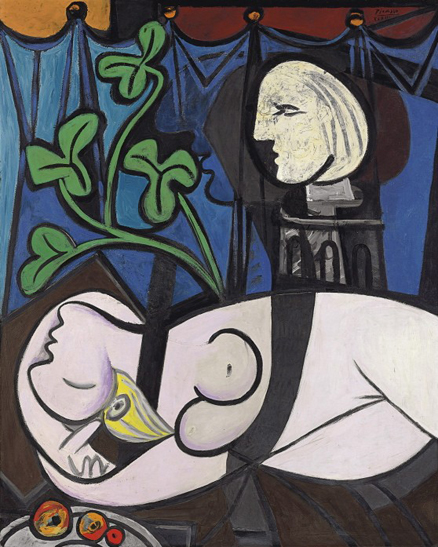
Picasso, Nude, Green Leaves, Bust, 1932. A “once in a life-time” chance to see it was sadly only at the auction house.
Just last night, a living artist record was broken in the Christie’s Post War / Contemporary evening sale when a Jasper Johns Flag sold for $28.6 (premium included). In this case, I tend to agree with Jerry Saltz, that this important piece, like many others, belongs on public view, not changing private hands. But, if they are destined to do just that, then attending the auction house gallery, sadly, is the only chance to bask in its wonder.
Auction houses may not be the ultimate art venue nor are they the favorite, but they give a chance to see something one would have not seen anywhere else (unless your super rich friends invite you to their home). It is what it is, not a good reality, but one that us art lovers, scholars and practitioners cannot afford to look away from or down at. Next time you feel you’ve seen it all, check if the neighborhood auction house is previewing.
So what do you think? The world wants to know!